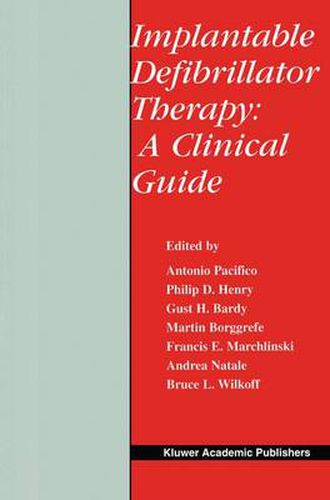Readings Newsletter
Become a Readings Member to make your shopping experience even easier.
Sign in or sign up for free!
You’re not far away from qualifying for FREE standard shipping within Australia
You’ve qualified for FREE standard shipping within Australia
The cart is loading…






This title is printed to order. This book may have been self-published. If so, we cannot guarantee the quality of the content. In the main most books will have gone through the editing process however some may not. We therefore suggest that you be aware of this before ordering this book. If in doubt check either the author or publisher’s details as we are unable to accept any returns unless they are faulty. Please contact us if you have any questions.
Implantable defibrillators as originally conceived by Michel Mirowski were limited to the detection and automatic termination of ventricular fibrillation. In the original AID device, the detection algoritlun sought to distinguish sinus rhytlun from ventricular fibrillation by identifying the more sinusoidal waveform of ventricular fibrillation. The therapeutic intervention was elicited only once deadly polymorphic rhythms had developed. It was rapidly learned, however, that ventricular fibrillation is usually preceded by ventricular tachycardia. Mirowski recognized the pivotal importance of developing algoritllms based on heart rate. Ventricular tachycardia detection allowed the successful development of interventions for the termination of ventricular tachyarrhythmias before they degenerated into ventricular fibrillation. Current device therapy no longer confines itself to tlle termination of chaotic rhythms but seeks to prevent them. Diagnostic algorithms moved upward along the chain of events leading to catastrophic rhytlulls. Rate smoothing algorithms were developed to prevent postextrasystolic pauses from triggering ventricular and atrial tachyarrhytlmlias. Beyond the renaissance of ectopy-centered strategies, long-term prevention received increasing attention. Multisite pacing therapies provided by Arrhythmia Management Devices were designed to reduce the arrhytlunia burden and optimize the synergy of cardiac contraction and relaxation. Clinical evidence now suggests that atrial fibrillation prevention by pacing is feasible and tllat biventricular pacing may be of benefit in selected patients with heart failure. However, these applications of device therapy that generally require ventricular defibrillation backup remain investigational and were not considered in this book.
$9.00 standard shipping within Australia
FREE standard shipping within Australia for orders over $100.00
Express & International shipping calculated at checkout
This title is printed to order. This book may have been self-published. If so, we cannot guarantee the quality of the content. In the main most books will have gone through the editing process however some may not. We therefore suggest that you be aware of this before ordering this book. If in doubt check either the author or publisher’s details as we are unable to accept any returns unless they are faulty. Please contact us if you have any questions.
Implantable defibrillators as originally conceived by Michel Mirowski were limited to the detection and automatic termination of ventricular fibrillation. In the original AID device, the detection algoritlun sought to distinguish sinus rhytlun from ventricular fibrillation by identifying the more sinusoidal waveform of ventricular fibrillation. The therapeutic intervention was elicited only once deadly polymorphic rhythms had developed. It was rapidly learned, however, that ventricular fibrillation is usually preceded by ventricular tachycardia. Mirowski recognized the pivotal importance of developing algoritllms based on heart rate. Ventricular tachycardia detection allowed the successful development of interventions for the termination of ventricular tachyarrhythmias before they degenerated into ventricular fibrillation. Current device therapy no longer confines itself to tlle termination of chaotic rhythms but seeks to prevent them. Diagnostic algorithms moved upward along the chain of events leading to catastrophic rhytlulls. Rate smoothing algorithms were developed to prevent postextrasystolic pauses from triggering ventricular and atrial tachyarrhytlmlias. Beyond the renaissance of ectopy-centered strategies, long-term prevention received increasing attention. Multisite pacing therapies provided by Arrhythmia Management Devices were designed to reduce the arrhytlunia burden and optimize the synergy of cardiac contraction and relaxation. Clinical evidence now suggests that atrial fibrillation prevention by pacing is feasible and tllat biventricular pacing may be of benefit in selected patients with heart failure. However, these applications of device therapy that generally require ventricular defibrillation backup remain investigational and were not considered in this book.